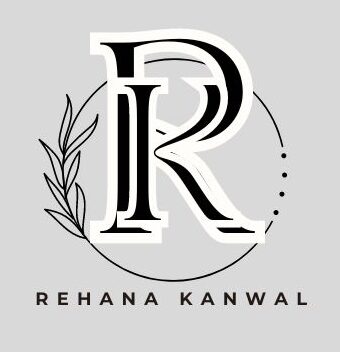Flowering plants that will attract honey bees (plants names and pictures)
Have you considered the cultivation of flowering plants that attract bees and increase productivity for plants? They can work in pollination, too. Then, you will have even more beautiful flowers in your garden!
Want to know which flowering plants will bring the bees to your garden this year? Want to create a bee paradise in your garden? You can choose thousands of flowering plant varieties suitable for your hardiness zone. Our guide on Bee Friendly Plants reveals to you the top flowering plants attracting honey bee, so you get this stunning view with lush foliage in your garden.
Bees view color differently than we do. They are most attracted to blue, violet, and purple flowers. They tend to stay away from red, brown, and black because, to them, these colors often represent trouble or danger in their environment. Actually, bees view red as black color. But, don’t remove those red flowers just yet…hummingbirds and butterflies love the color red, too.
An essential way to attract bees to your garden is by providing a yard abundant with pollen and nectar or keeping bees in garden so that the distance between flowers that bees need to travel is reduced.
List of Best Flowering plants that attract honey bee with their beautiful flowers
1. MARJORAM

Here are some of the reasons Origanum majorana, more commonly known as marjoram, is a favorite of many a bee. It is hardy in USDA zones 9 and 10. But what specifically makes these flowering plants so attractive to them is its nectar-filled blooms and perfume, which, even from afar, could lure these creatures. This thus makes it an excellent addition to any garden looking to help such vital pollinators because of its attraction to bees.
2. LAVENDER

The botanical name of lavender is Lavandula angustifolia. It does well in USDA Zones 5 through 8. Bees love lavender flowering plants because they love linalool, a type of aromatic oil that smells good. They follow their noses to these plants with their irresistible perfume and flock—better, fly—to visit.
3. FENNEL

Fennel is an excellent plant for bee friendly gardens due to its sun-loving, bright yellow flowers. Bee fennel grows best in USDA zones of 4 to 9 and remains very attractive to bees for a long period due to its extended period of blooming, which provides a steady supply of nectar.
4. PUSSY WILLOW
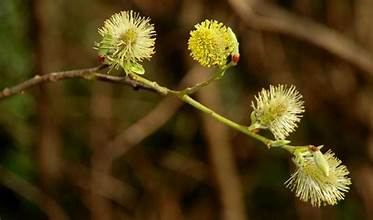
Pussy willows (Salix discolor) draw a lot of bees because of their delicate, fuzzy buds. Its USDA zones are 4 to 8. They provide a vital source of energy for bees emerging from hibernation as they are among the first flowering plants to blossom in the spring.
5. HWLIOTROPE

For drawing in bees, heliotropes (Heliotropium arborescens) are a great option. It grows more effectively in YSDA Zones 10 and 11. Bees may easily obtain the nectar at the centers of their purple, violet, and white open flowers.
6. ASTER

Asters are champions of late-blooming flowers, providing an important food supply for Honey bees when many other blooms have gone. They are found in USDA zones 4 through 9. They are also a flexible option for improving your grass.
7. ABELIA (BEE BUSH)

Bee Bushes are known by their botanical name, Abelia x grandiflora. USDA Zones 6 through 9 are ideal for them. Aptly named for its propensity to attract pollinators, bee bushes bloom from early summer to autumn. Because of their abundance of nectar, bees prefer to visit these flowers plants during their flowering season.
8. LILAC
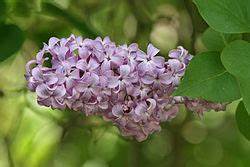
The botanical name of the lilac is Syringa vulgaris. It grows well in USDA Zones 3 to 8. Bees are drawn to the vivid purple color of lilac blooms. But although it smells good to us, bees don’t find it very attractive. Lilacs will attract bees to your yard, but their efficacy in doing so may be inferior to that of other plants.
9. CHIVES

The botanical name of chives is Allium schoenoprasum. They are suitable for USDA Zones 3 to 9. one of the lovely flowering plants, chives have small purple blossoms that resemble pom-poms, and bees adore them. The nectar is freely accessible to bees due to the open structure of the blooms.
10. GOLDENROD

The botanical name of goldenrod is Solidago. It grows well in USDA Zones 3 to 10. Late-blooming goldenrod flowers give bees a useful source to supplement their diet before hibernating in the winter. It is absolutely worthwhile to plant them in your garden.
11. BEE BALM

The botanical name of bee balm is Monarda. It thrives in USDA Zones 4 to 9. Bee balm not only attracted honey bees but also hummingbirds and butterflies. Tea can also be made from the leaves of this beautiful flowering plant.
12. CALENDULA

The plant calendula, or Calendula officinalis, grows best in USDA Zones 9 to 11. Calendula is a flower plant that may be used to flavor stews and is edible. It also attracts honey bees and supplies honey for them.
13. SEDUM

Bees find sedum (which grows in USDA Zones 3–10) to be very alluring since it produces a lot of pollen and nectar. When other flowering plants are starting to become rare in the late summer and early autumn, these flowers become even more valued.
14. CATMINT
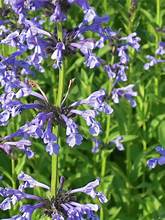
USDA Zones 3–8 are ideal for growing Nepeta x faassenii, or catmint. This flowering shrub, which can withstand dryness, draws bees and can possibly attract stray animals to your garden. Plus, its blue blossoms are really lovely.
15. BORAGE

Borago officinalis, commonly referred to as borage, thrives in USDA Zones 2 to 11. This flowering plant is a wonderful bee attraction because of its tasty cucumber-flavored leaves and star-shaped flowers that quickly replenish nectar. This plant offers a constant source of food for honey bees.
16. FOXGLOVE
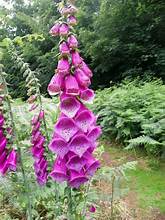
Foxglove, or Digitalis purpurea, grows best in USDA Zones 4 through 9. In addition to their nectar, foxglove blossoms also contain trace levels of digitalin, a substance that is thought to be intoxicating to bees.
17. ANISE HYSSOP

Grown in USDA Zones 4 through 8, Agastache foeniculum is widely recognized for attracting a lot of honeybees with its tubular-shaped, easily accessible blooms that are high in nectar. There’s also a nice smell to these blooms.
18. JOE PYE WEED

Eupatorium purpureum, also known as Joe Pye Weed, grows well in USDA Zones 3 to 9. Consider a wildflower’s size when selecting one to attract bees to your yard, as some can grow up to nine feet tall.
19. SUNFLOWER

Sunflowers, or helianthus, are native to USDA Zones 4 – 9. Sunflowers may be planted nearly anyplace and are very simple to grow in a variety of soil conditions. Bees can also find their huge brilliant yellow blossoms to be a beacon.
20. CONEFLOWER

Coneflowers, or Echinacea purpurea, are native to USDA Zones 3- 8. Their nectar-rich blooms draw hummingbirds, butterflies and bees alike. The nectar-producing disc florets at the center of the cone are easily accessible to a variety of honeybee species due to the ray florets’ partial encirclement of the cone.
21. PHLOX

Phlox, or Paniculata, is one of the flowering plants that grows best in USDA Zones 3- 9. It has brilliant flower clusters that grow near to the ground. Bees, especially short-tongued bumblebees, can readily access these little blooms and easily reach the center.
22. BLACK EYED SUSAN

Black-eyed Susans, or rudbeckia, are native to USDA Zones 3 – 10. Pollinators are richly provided with nectar by these flowering plants. Nectar-filled cluster of small florets forms the flower’s central “eye.”
23. ROSEMARY

Rosemary, or Salvia rosmarinus, grows well in USDA Zones 7 -10. These drought-tolerant flowering plants produces both pollen and nectar, and it has lovely flowers that bloom for a long time. It is the most effective choice for attracting bees.
24. SAGE

The best USDA Zones for sage, or Salvia officinalis, are 5-8. Although they adore sage, they occasionally prefer to consume the nectar of other flowering plants. Because the petals of sage blossoms form a hood over the stamens and stigmas, it might be challenging for bees to get the nectar contained within.
25. SWEET ALYSSUM

Sweet Alyssum, or Lobularia maritima, is one of the popular low-growing annual flowering plants. Its blossoms bring a lot of bees to your yard and bloom almost all year round.
26. SNAPDRAGON

Snapdragons, or Antirrhinum majus, are a plant that grows best in USDA Zones 7 to 11. In addition to providing food for bees in the cooler months, their vivid yellow blossoms are a lovely addition to any garden.
27. COSMOS

Cosmos bipinnatus, often known as cosmos, grows best in USDA Zones 2–11. Their open flowers are beautifully colored, making it easy for bees to obtain the nectar from the central disc. These blossoms can also thrive in any type of soil.
28. HELENIUM

Helenium autumnale, better known as heleniums, grows well in USDA Zones 3–9. Nectar is continuously produced by these flowering plants, much like sunflowers do with their bright yellow flowers. Their consistent supply draws bees to them time and time again.
29. LARKSPUR

Consolida ajacis, commonly referred to as larkspur, thrives in USDA Zones 3–9. Bees are drawn to the blue, purple, or pink flowers produced by these flowering plants. For greatest attraction to bees, grow Bee Larkspur, a plant with trumpet-shaped flowers.
30. PANSY
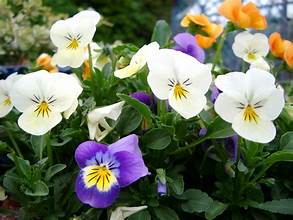
Pansies, or Viola tricolor, are native to USDA Zones 4 – 8. For bees of all sizes, its broad, velvety petals offer a roomy landing pad. Pansies bloom for a longer period of time as well; they start in early spring and last until autumn.
31. COREOPSIS

Coreopsis grandiflora, also known as coreopsis, grows best in USDA Zones 3–9. A variety of pollinators and people alike are drawn to its bright yellow blossoms. These lovely blooming plants release pollen and nectar all through the growing season.
32. GLOBE THISTLE

Globe thistles, or Echinops ritro, are native to USDA Zones 3 to 8. The spiky florets of these plants resemble a treasure chest filled with nectar. Bees are naturally drawn to this nectar of flowering plants and are skilled at finding it.
33. ZINNIA
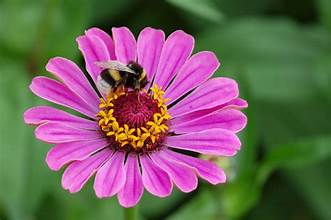
Zinnia elegans, also known as zinnias, grow well in USDA Zones 3–10. These blooms are well renowned for having a lengthy blooming season that often lasts from mid-summer till frost. Bees find zinnias to be highly appealing since they come in a variety of colors.
34. SNOWDROP

The best USDA Zones to grow snowdrops, or Galanthus nivalis, are 3–7. Being among the first flowering plants to open their flowers in the spring, they are a welcoming sight for bees emerging from a hard winter.
35. YARROW

Achillea millefolium, sometimes known as yarrow, grows well in USDA Zones 3–9. This wildflower attracts pollinators by providing nectar and pollen. Its flat flower heads are not the most attractive thing to bees, but they do hide the stamens, so short-tongued bees can’t get to them as easily.
36. CALIFORNIA POPPY

Eschscholzia californica, commonly referred to as California poppies, thrives in USDA Zones 6–10. These poppies flowers are a minor nectar source since they produce a lot of pollen to offset their meagre nectar yield.
37. BABY BLUE EYES

Nemophila menziesii, sometimes known as Baby Blue Eyes, grows best in USDA Zones 3–9. Bees are attracted to blue and violet colors flowers since they are unable to perceive red flowers, which is why Baby Blue Eyes flowers are very appealing to them.
38. MARIGOLD

Grow marigolds, or Tagetes erecta, in USDA Zones 2 to 11. Cultivars with solitary flowers provide a substantial quantity of nectar, an essential food source for bees. Moreover, marigolds’ petals offer limitless possibilities for multiplication.
39. BLANKET FLOWER

The blanket flower, Gaillardia pulchella, is a native of USDA Zones 3 to 10. The majority of these flowering plants, which number in the 25–30 species, are great at drawing in bees and butterflies. Additionally, they are disease- and pest-resistant.
40. MORINGA

Bees are drawn to moringa flowers because of their buzzing activity. The plant will keep growing as long as it is placed in a bright area.
41. CITRUS FLOWERS

Even from a distance, bees are drawn to the potent citrus aromas emitted by citrus flowers. For the fertilization of flowers and fruit, these bees are necessary.
42. WILD ROSE

Wild roses, often known as roses of the woods, are hardy and low-maintenance flowering plants. Their wonderful perfume attracts pollinators, making them a hardy and beautiful addition to gardens.
